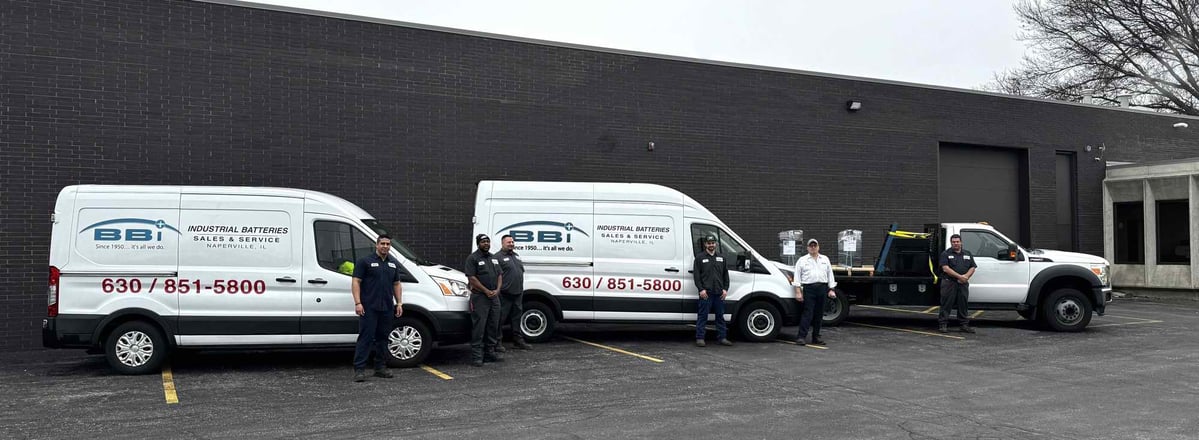
Boosting Efficiency with Forklift Batteries
Introduction
In today's fast-paced industrial landscape, efficiency isn't just a buzzword; it's a necessity. For businesses relying on material handling equipment, the choice of forklift batteries can make all the difference. A well-selected battery not only ensures smooth operations but also enhances productivity, reduces downtime, and ultimately contributes to the bottom line. In this article, we will delve deep into how Boosting Efficiency with Forklift Batteries can transform your operational dynamics.
Understanding Forklift Batteries: Types and Features
When it comes to forklift batteries, understanding the different types available is crucial for making informed decisions that lead to operational efficiency. The three primary types of forklift batteries are lead-acid, lithium-ion, and nickel-cadmium.
1. Lead-Acid Batteries: The Traditional Choice
Lead-acid batteries have been around for decades and remain the most common choice for forklifts. They offer several advantages:
- Cost-Effective: Generally cheaper upfront compared to other types.
- Reliability: Proven track record in various industries.
- Availability: Widely available and easy to replace.
However, they come with their share of downsides. Lead-acid batteries require regular maintenance—like water refilling—and they typically have longer charging times.
Benefits of Lead-Acid Batteries
2. Lithium-Ion Batteries: The Modern Marvel
Lithium-ion batteries are gaining popularity due to their advanced technology and 80 volt flat plate forklift batteries numerous benefits:
- Quick Charging: These batteries can be charged rapidly, allowing for minimal downtime.
- Longer Lifespan: Typically outlast lead-acid options by two or more years.
- Maintenance-Free: No need for watering or equalizing charges.
While the initial investment is higher, the long-term savings on maintenance and energy consumption often outweigh these costs.
Benefits of Lithium-Ion Batteries
3. Nickel-Cadmium Batteries: A Specialized Option
Nickel-cadmium (NiCd) batteries are less common but still 12 volt flat plate forklift batteries relevant in certain applications:
- Durability: Can handle extreme temperatures without significant performance loss.
- Top Performance Under Load: Maintain voltage levels even under heavy loads.
However, they suffer from a "memory effect," which can reduce their effective capacity if not properly managed.
Benefits of Nickel-Cadmium Batteries
Boosting Efficiency with Forklift Batteries
Now that we've explored the various types of forklift batteries, let's discuss how choosing the right one can significantly enhance operational efficiency.
Maximizing Uptime with Optimal Battery Choice
Choosing the right battery type can drastically reduce downtime—a critical factor in boosting efficiency:
- How often do you use your forklift?
- What is your average load weight?
- Do you operate in extreme conditions?
By answering these questions, you can better determine which battery type suits your requirements best.
Implementing Smart Charging Solutions
Another way to ensure you're maximizing efficiency is through smart charging solutions:
- Utilize chargers that automatically adjust voltage based on battery needs.
- Consider implementing opportunity charging practices—charging during breaks or downtime—to keep forklifts ready for action at all times.
Smart chargers paired with lithium-ion technology can significantly cut down on total operating costs while maximizing uptime.
Regular Maintenance Checks
While some battery types require more maintenance than others, a consistent maintenance schedule is key:
- Regularly inspect lead-acid batteries for electrolyte levels.
- Ensure connections are clean and free from corrosion.
A simple maintenance routine will prolong battery life and optimize performance—directly contributing to operational efficiency.
Frequently Asked Questions (FAQs)
1. What is the lifespan of forklift batteries?
The lifespan varies depending on the type:
- Lead-Acid Batteries typically last 3-5 years.
- Lithium-Ion Batteries may last 5-10 years or longer with proper care.
- Nickel-Cadmium Batteries usually last up to 7 years if maintained well.
2. How do I know when my forklift battery needs replacing?
Signs include:
- Reduced run time
- Inconsistent performance
- Physical swelling or leakage
If you notice these issues, it might be time to consider a replacement.
3. Are lithium-ion forklift batteries worth the investment?
Absolutely! While they require a higher initial investment, their longevity and reduced operational costs make them cost-effective in the long run.
4. Can I mix different types of forklift batteries?
No! Mixing different types can lead to poor performance and may damage your equipment over time.
5. What kind of charger do I need for my forklift battery?
Your charger should match your battery type (lead-acid or 36 volt flat plate forklift batteries lithium-ion) and specifications provided by the manufacturer for optimal performance.
6. How often should I perform maintenance checks on my forklift battery?
For lead-acid models, check monthly; lithium-ion requires less frequent checks but should be inspected regularly as per manufacturer's recommendations.
Conclusion
In conclusion, enhancing operational efficiency through correct selection and management of forklift batteries cannot be overstated. By understanding the different types available—lead-acid, lithium-ion, and nickel-cadmium—you set yourself up for success in choosing the best fit for your business needs. Smart charging practices combined with regular maintenance checks will further ensure you're maximizing uptime while minimizing costs associated with downtime or inefficient operations.

So why wait? It's time to start Boosting Efficiency with Forklift Batteries today! Your bottom line—and productivity—will thank you later!